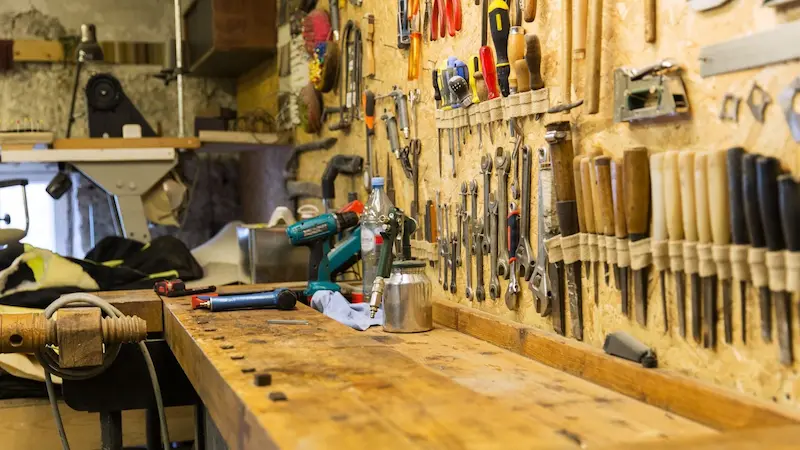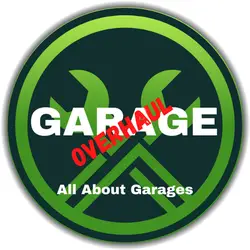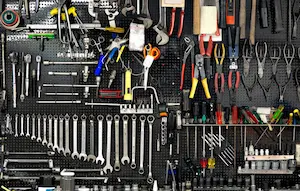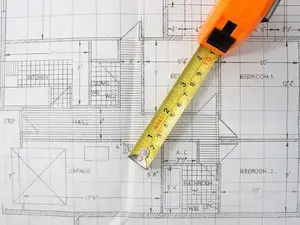How to Set Up a Workshop in Garage (Advice & Layout)
This post contains affiliate links.
One of the best ways to use a garage is to turn it into a workshop and work on your passion. However, you will need to set it up properly. After all, you want a productive, safe, and comfortable workshop to work in. How to set up a workshop in a garage?
To set up a workshop in a garage:
- Ensuring your garage has the right amount of space.
- Draw out a plan to arrange your tools and gear.
- Set up the wiring, lighting, and ventilation.
- Ensure the garage has adequate heating and cooling.
- Create surfaces and storage for your tools and equipment.
- Arrange and place your tools and gears.
In this article, we explore how you can set up a workshop in a garage. We also discuss the steps to set up a woodworking and an auto shop, two of the most common workshops in the country.
Finally, we answer some common questions about setting up a workshop in a garage in the Q&A section.

Can I Use My Garage As A Workshop?
You can use your garage as a workshop. However, ensure the garage is safe, ventilated, and large enough to work in. This is to prevent mishaps from happening while you work. If you turn your garage into a revenue-generating workshop, register it as a business.
For most people, the garage is for two things. One is to park their cars. Secondly, to store and organize things and gear. However, can you use your garage as a workshop?
Yes, you can. There is no limitation on what you can do with your garage since it is private property. In many cases, as long as you keep what you do inside your garage, you will not run afoul of your neighbors.
However, make sure you take care of the basics before you set up your garage. These are:
- Clearance: You can generally do whatever you wish in your garage. However, some Homeowners Association (HOA) may appreciate you checking with them first. Tell them what you plan to do in your garage, and see if they approve it.
- Power: Depending on the type of workshop you plan to have, you may need more power supply than usual. In this case, consider rewiring or setting up new power supply lines.
- Safety: You may be working with power tools that may be dangerous if you are not careful. This means you want to ensure your garage is safe to work ok. You want to also keep adequate space between equipment and have at least a fire extinguisher.
- Security: If you place your expensive tools and equipment in your garage, secure it. You will need to have at least some sort of garage door opener and locker. On top of that, you can also install safety cameras.
- Ventilation: You may work with equipment that releases fumes, gas, or particles. This means you want to ensure your garage is well-ventilated. You may need additional windows or wall vent lines.
- Heating and Cooling: You want to ensure the garage’s temperature is well-regulated. Consider installing a garage cooler so you can work well over the summer. A garage heater will also help to keep you warm over colder months.
How Do You Set Up A Workshop In A Garage?
To set up a workshop in a garage, you can follow the steps below:
- Clear your garage
- Lay out your workshop plans.
- Take care of wiring and lighting.
- Install ventilation and climate control.
- Improving flooring and security
- Create surfaces and cabinets for equipment.
- Put in equipment and organize tools for the workshop.
- Maintain and improve the garage.
Setting up a workshop in a garage is not a walk in the park, but it is not rocket science either. You need a clear idea of what you want to set up and then a step-by-step process of what to do.
We can’t help you much with the idea part, but here are the steps you can take to set up a workshop in a garage:
Clear Your Garage
To start the setup work, you will need to clear your garage. This means removing the things inside so that you can start fresh.
Assuming your garage is currently used to store things only. In this case, you may consider conducting a garage sale and selling off any of the items inside you do not need. These funds can be used to help set up your workshop.
If your garage is used to park your car, you may need to consider a different arrangement. For the easiest solution, you can just park in the driveway. However, a more proper solution would be to build a carport.
The remaining items you decide not to let go may require storage. In this case, free up the walls and floor space by installing ceiling storage racks. These racks hang on the ceiling, and you can lower them down when you need to access your things.
Once cleared, give your garage a clean. These include removing cobwebs and dust from the walls and ceiling. The floor may also need some sweeping, vacuuming, and mopping too.
Lay Out Your Workshop Plans
Now that your garage is clean and cleared up, you can start planning how to set it up. Feel free to be as imaginative as possible here.
Start by determining the large tools or equipment you need to accommodate inside. Then measure their sizes, and determine the best location to place them. You also want to think about how you want to place them.
For example, suppose you are working to set up a woodworking shop. You have a miter saw to place. In this case, you should be able to build a small 2 x 2 x 4 feet stand and mount your saw on it. The stand can be placed on the side walls, close to the air vent.
You must also think of an organization for your smaller tools or consumables. These include cabinets, shelves, drawers, bins, and so on.
Consider how your design will affect your other needs as you do this. These include power supply, lighting, and flooring needs.
Ensure all your furniture, tools, and materials have a place in the workshop. If you need a new power outlet, lighting, or ventilation, include them in your plan.
You can do this using a sheet of paper with some rough drawings. If you are the super detailed type, you can always use software to help draw out the plan.
Take Care Of Wiring And Lighting
Before you get all excited and moving in the equipment and tools, there is a lot of groundwork to be done first. These works are best done when your garage is empty, making it easier.
The first two things to work on are the wiring and lighting. Go back to your plans, and look where you need to set up power points. If you need to set up new wiring, this is the right time to do it.
While performing wiring work, ensure it has the right capacity. If you only plan to use standard tools, a household 120V supply should be fine. However, you will need additional dedicated 220V panels if you have heavier stuff.
For power outlets, ensure you dedicate enough amperage too. For 10 outlets, a 15 amp circuit should be enough. If you need 13 outlets, set up a 20 amp circuit. A garage should have about 60 amps.
If unsure, check with your electrician, or you can consult the National Electric Code to be sure of things.
For lighting, ensure you have proper lighting to illuminate the entire garage. Some areas may need additional lighting, such as your workbench. You may also need more lights on places where you perform accurate, intricate work.
For garage lighting, LED lights are usually the best option. They provide very good lighting and, at the same time, are low power consumption.
Install Ventilation And Climate Control
Your garage is now clean and sorted out on the wiring and lighting. Now, you can move on and work on ventilation and climate control.
In many cases, you would prefer to be able to use your garage year-round. This means you need to have some sort of air conditioning system inside.
The goal is to cool you on hot days and warm you on cold days. Install a garage heater and cooler to regulate temperature better in your garage. You can also regulate the temperature in your garage better with insulation.
Insulation helps prevent the heat from entering your garage, keeping it cool on summer days. It also prevents the warm air from escaping in winter, keeping your workshop toasty warm.
Another issue to think about is ventilation. You will need good ventilation if you work on cars, metalwork, and so on. This prevents toxic gasses and fumes from building up too much and becoming a health hazard.
The issue may be more prominent during winter, as you may use the workshop in a closed setting. Ventilation is a simpler matter. You can consider installing windows or wall vents.
Improve Flooring
The next natural step in setting up your garage for your workshop would be the flooring. In many cases, your garage should be in bare concrete slabs. Bare concrete flooring may be ideal for certain workshops. However, you generally want a more finished surface.
This is because a finished surface is easier to clean. Your workshop would likely produce byproducts that may be hard to clean off on bare concrete. Think about trying to sweep wood dust away from tiny cracks on the floor or oil and lubricant spills.
Consider refinishing your garage floor with epoxy. Epoxy flooring is a good way to protect your floor. Epoxy flooring does not absorb water or oil, making cleaning easy. It is also safer since epoxy flooring does not turn slippery.
Epoxy is also rather affordable and easy to lay in. After cleaning the floor, you use an etching machine to etch the floor. Then you prime the floor before laying in the epoxy. Once the epoxy layer dries, it should provide over 10 years of comfortable flooring.
Read More: Garage Flooring
Improve Security
Now that your workshop is fine and well set up, you can now think about securing it. You have several options depending on how far you plan to go with the security.
We recommend you beef up the security based on what you plan to have inside your workshop. The more expensive your tools and equipment, the more you should secure your garage.
At the most basic, you should have a garage door opener with a remote control system. This allows you to control who can open the garage door. On top of that, consider some sort of locks for your side door.
If you want to take security to the next level, set up a monitoring system. A wireless camera should do the job well. Consider getting those with a connection to the internet. This allows you to monitor your garage on a live feed.
Complement that monitoring system with motion detectors and lighting. When it senses movement, it turns on the lights, making your garage bright.
This allows the camera to clearly record who is approaching your garage. The bright lights would deter the person from any ill intention too.
Create Surfaces And Cabinets For Equipment
You need to create the surfaces to host your equipment and tools. This means you need to start getting some furniture in.
Depending on your preferences, you can custom-build your furniture. You can build your cabinetry, allowing you the perfect range of storage options. You can also maximize the space available to host and store your stuff.
If building cabinets from scratch is not your thing, you can always purchase them. There are many options here too. You can purchase a workbench, shelving, racks, and more.
You can choose from regular wooden shelves to cabinets made from stainless steel. You can also set up a huge pegboard to make hanging smaller tools and items easy. Pegboards are perfect for small and frequently reached items.
The key is to think about weight, accessibility, and security. There are things you want to place on open racks to make them easy to reach. Some things are better kept in a cupboard with doors to prevent children or pets from accessing them.
Improve Safety
The next step is to improve the safety of your workshop. You will usually engage in physical work and use serious machinery. This means injuries and accidents can occur. You want to ensure you are prepared for any eventuality.
At the bare minimum, you should have a fire extinguisher in the workshop. Place them somewhere visible and easy to reach. You may not feel like you need them, but it may be too late when you really need time.
Consider also having a first aid kit. These are also useful to help deal with injuries when they occur. When making your first aid kit, use the list of recommended items from the American Red Cross.
If you want to go further, check if you can set up an Automated External Defibrillator (AED.) You may never need to use it, but when someone has a heart attack, you have it to help jumpstart their heart.
This goes without saying, but ensure you have the right safety tools and wearables to wear when working. These include helmets, gloves, respirators, face masks, and hearing protection.
Put In Equipment And Organize Tools For the Workshop
Finally, the big day has come. You can now officially move into your brand-new workshop. This may be the most exciting part of setting up a workshop in a garage. This is because you will finally see your hard work come to fruition.
Start by moving to the larger items first. These large items are also heavy, so you want to move them in before you tire out. Next, you can bring in the smaller items and organize them.
Generally, smaller and frequently used items go on the pegboards. Tiny bits, such as screws, can go to drawers and organizers.
Sensitive items such as paint, oil, or grease can be placed inside a cabinet with lockable doors. These should keep them safe and out of reach of others. You do not want children or pets to gain access to these and hurt themselves.
If you have planned and built the right storage solutions, you should have a place for everything you use. When finished, make yourself a cup of tea, and enjoy the success of finally setting up your dream workshop!
Maintain And Improve
Now that your workshop is set up, you can start using it. However, ensure you take care of and maintain it well along the way.
This means regularly cleaning and taking care of the cabinetry and machinery. Some furniture or tools may require lubrication. Over time, some of the flooring or wall may need refinishing. However, these should not be major work if you do them regularly.
As you work inside your garage, you may need more storage space or surfaces to work on. In this case, consider improving your workshop from time to time. This will help to keep your workshop an efficient and comfortable place to work in.
What Workshops Do People Usually Set Up In Garages?
Common workshops set up in garages include woodworking, automotive, electronic repairs, and more. People also turn their garages into workshops to pursue their hobbies, which can be many things.
People generally set up in their garages for woodworking and automotive work. This is because these are probably the most common things people own and want to maintain.
A woodworking workshop allows you to build furniture and cabinets. They would also fit perfectly in your home. You also can repair or recondition furniture too. An auto shop allows you to perform maintenance work on your car. You can save money by visiting auto repair shops.
However, people also set up their garages for all sorts of work. These could include metalwork, electronic repairs, and more. Many people enjoy tinkering and trying to repair laptops, smartphones, and more.
Some people turn their garages into workshops to pursue their hobbies. These could include soap making, wood burning, or ant keeping. Options abound here, and your imagination is your limit.
Can I Use My Workshop As A Business?
Generally, you can use your workshop as a business. However, check with your local authorities on the legality of such a move. In most cases, you may need to register as a business.
The garage is the backbone of American innovation. In fact, many of the world’s top corporations were born out of the garage. These include companies such as Harley-Davidson, Apple, and even Microsoft.
Suppose you have set up your workshop, and you start to receive requests from people to help do work. In this case, you may be tempted to ask for money.
In this situation, you may worry about the legality of this move. You may not be sure if you run a business from a garage or if you need to register as a business.
Our advice is to check with your local government. They may have provisions about running a business operating out of a garage. You may be asked to register as a business and file taxes too.
This also comes with you having to set up systems for billing, invoicing, and more. These are extra headaches that you may not want. But the money you make from your workshop may be worth the hassle.
However, many localities allow you to use a home address to register a business. This means you can run your business out of a garage. The key is to check and confirm first.
Once you have registered as a business, you must comply with the local laws and codes. Some workshops may require specific setups or rules. For example, you may need to limit the number of people in your workshop at a time or have a first aid kit.






